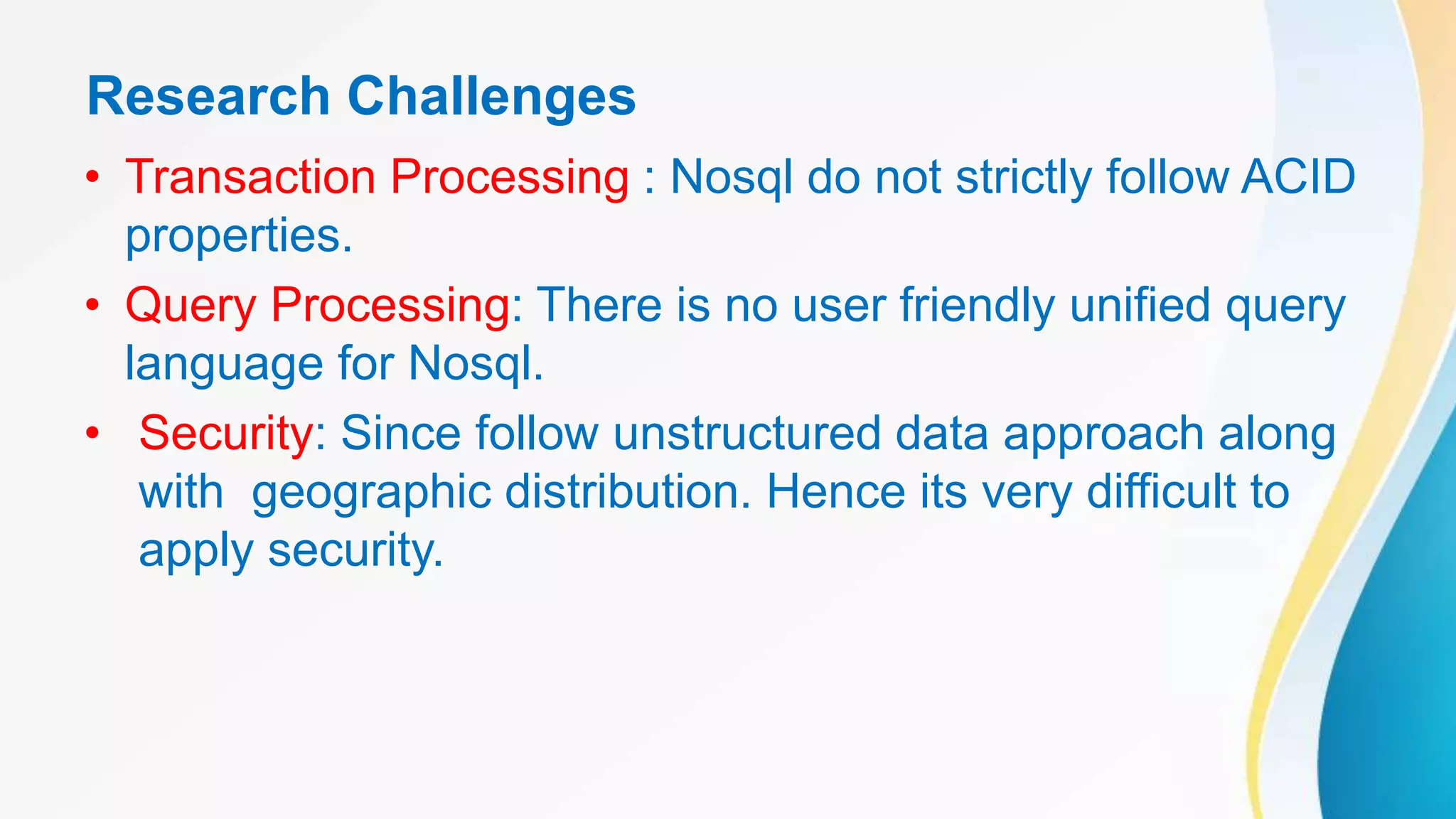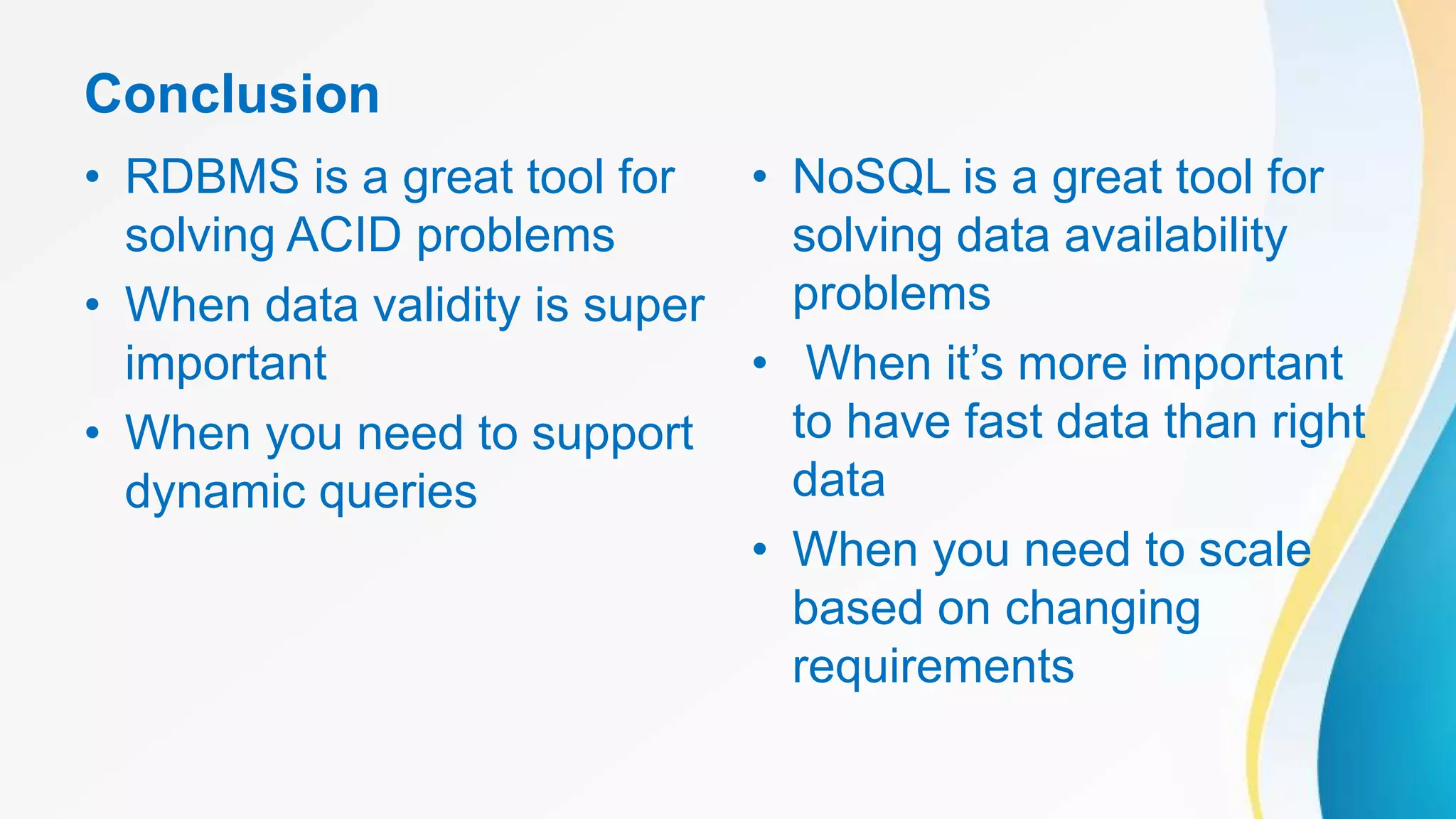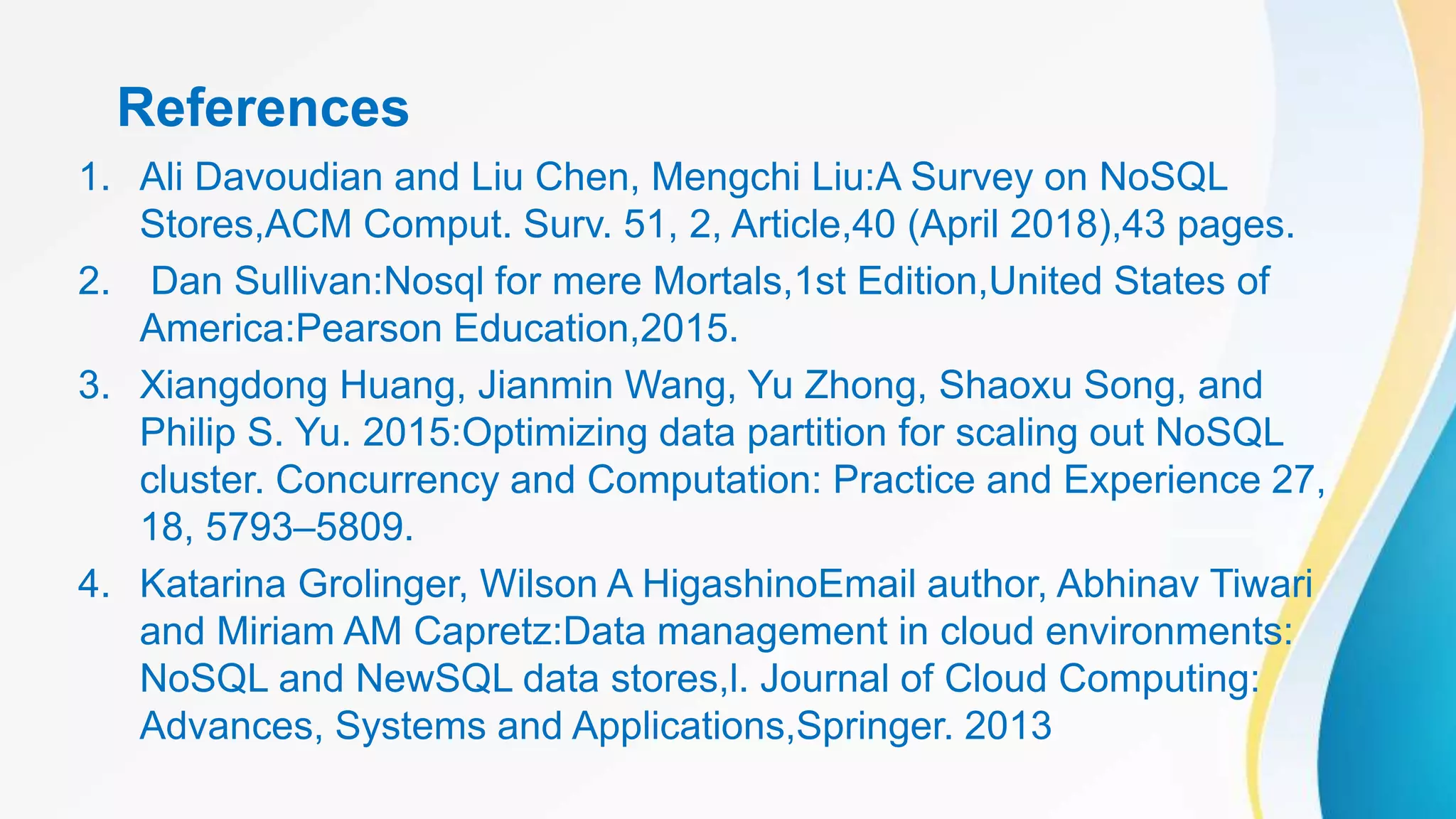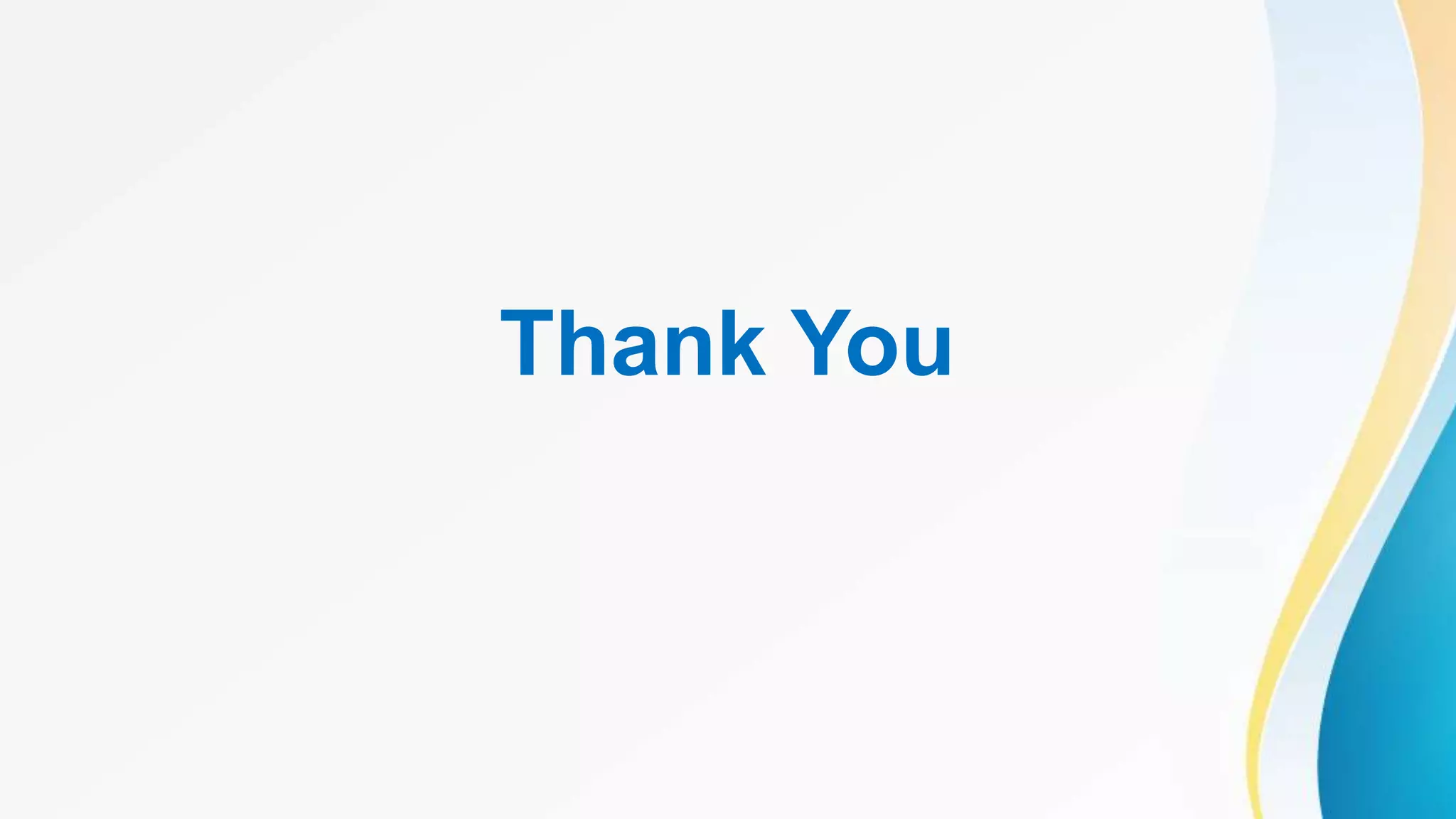This document provides an introduction to NoSQL databases. It discusses the history and limitations of relational databases that led to the development of NoSQL databases. The key motivations for NoSQL databases are that they can handle big data, provide better scalability and flexibility than relational databases. The document describes some core NoSQL concepts like the CAP theorem and different types of NoSQL databases like key-value, columnar, document and graph databases. It also outlines some remaining research challenges in the area of NoSQL databases.

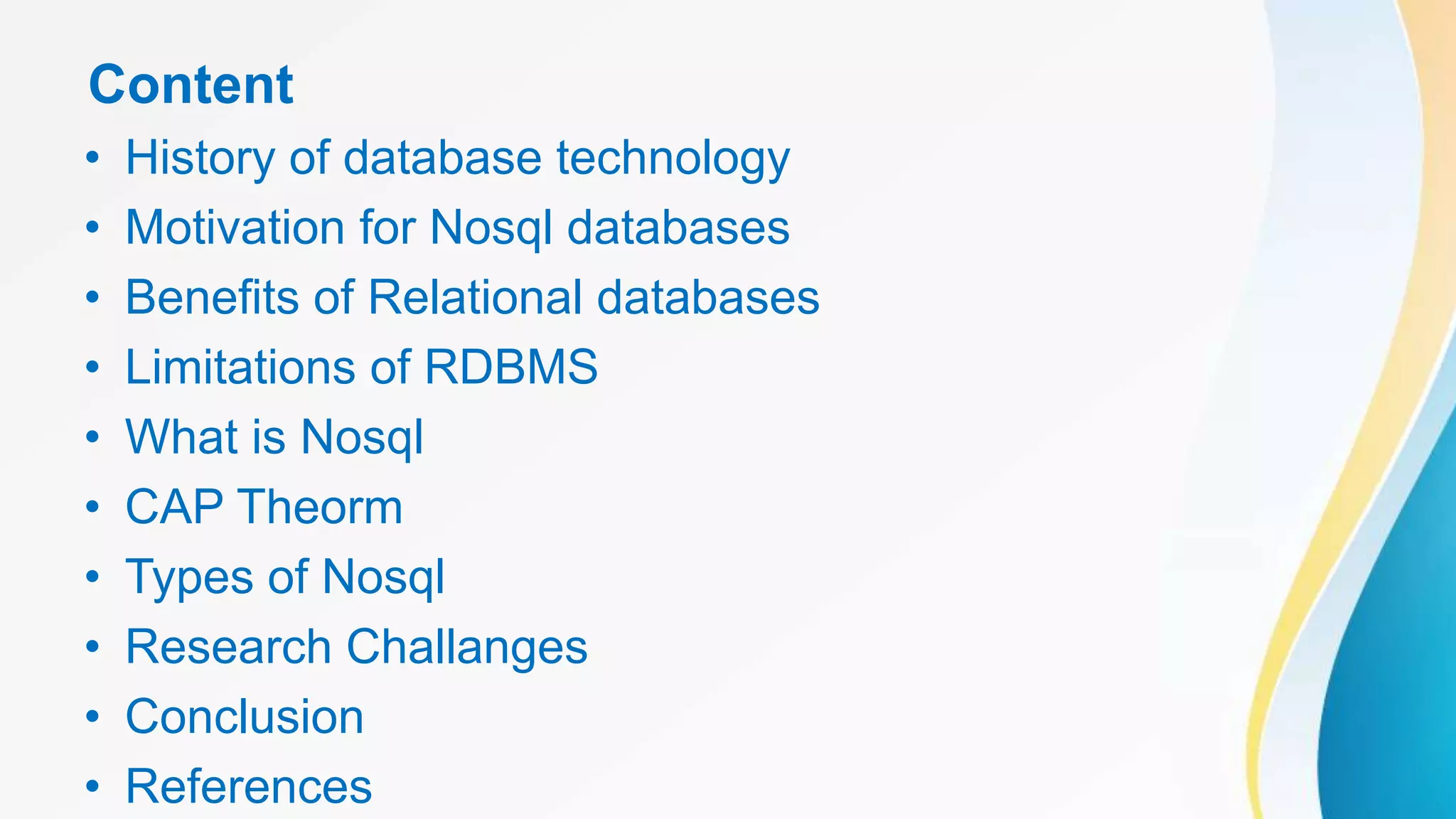


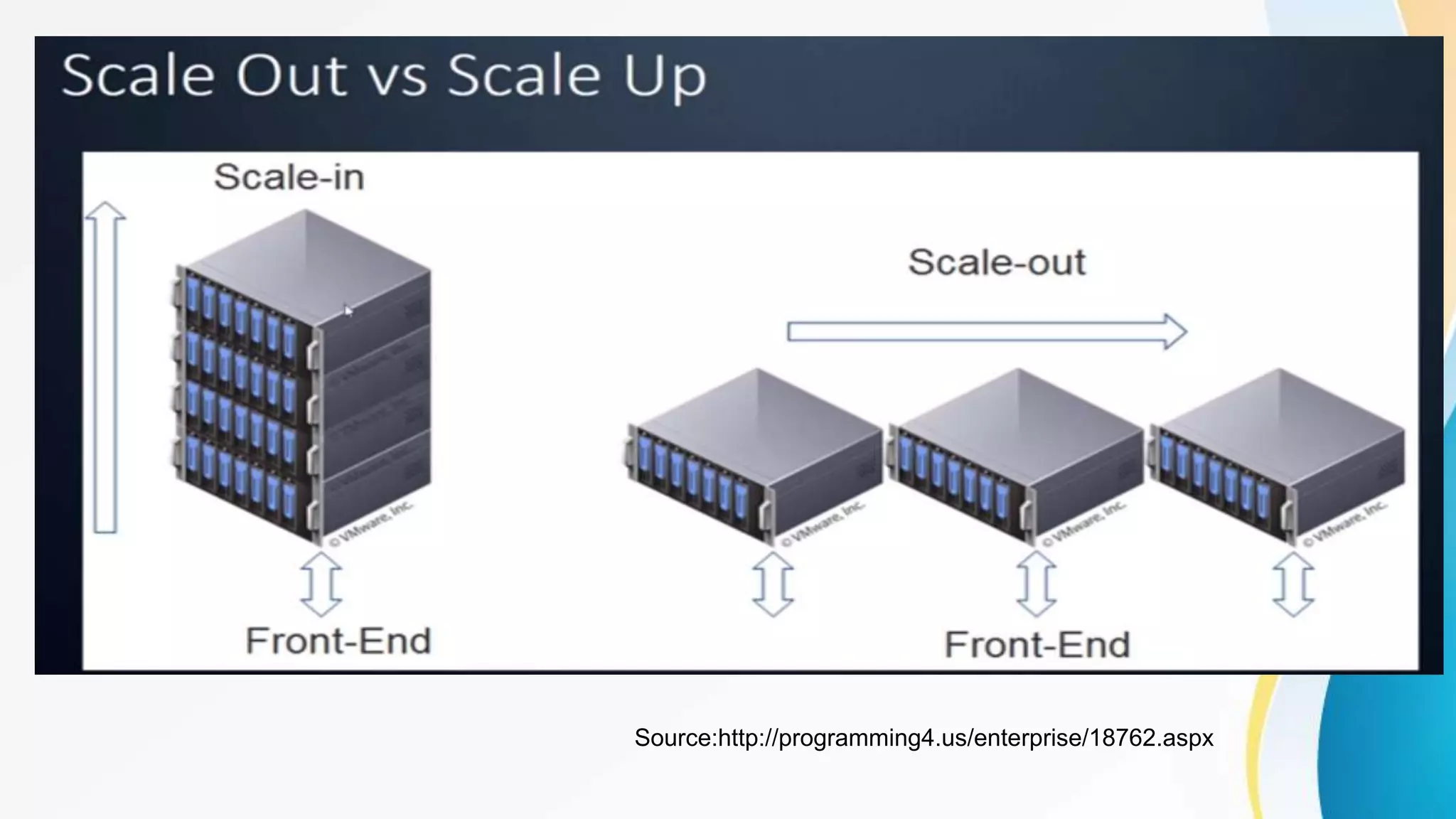
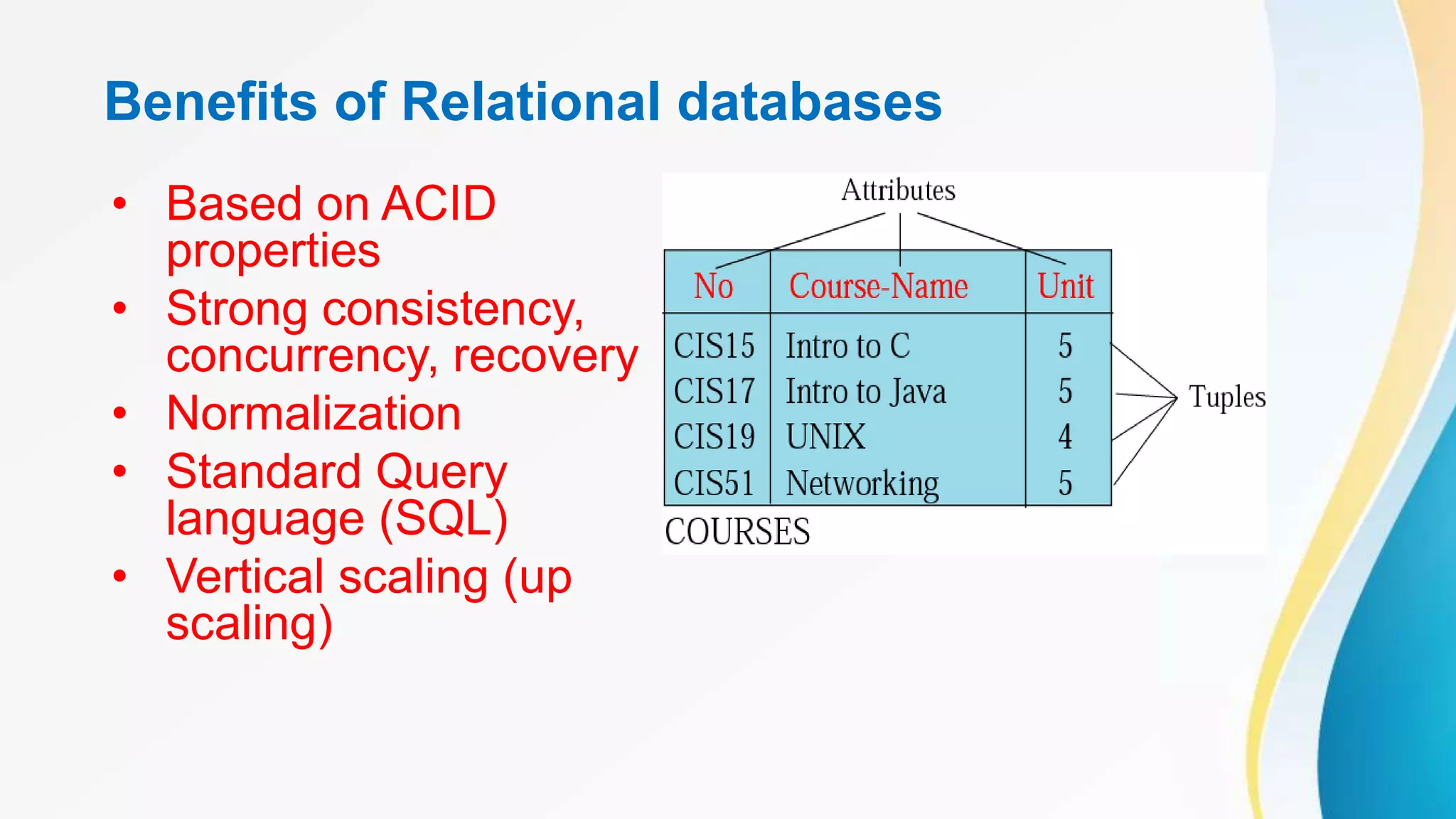
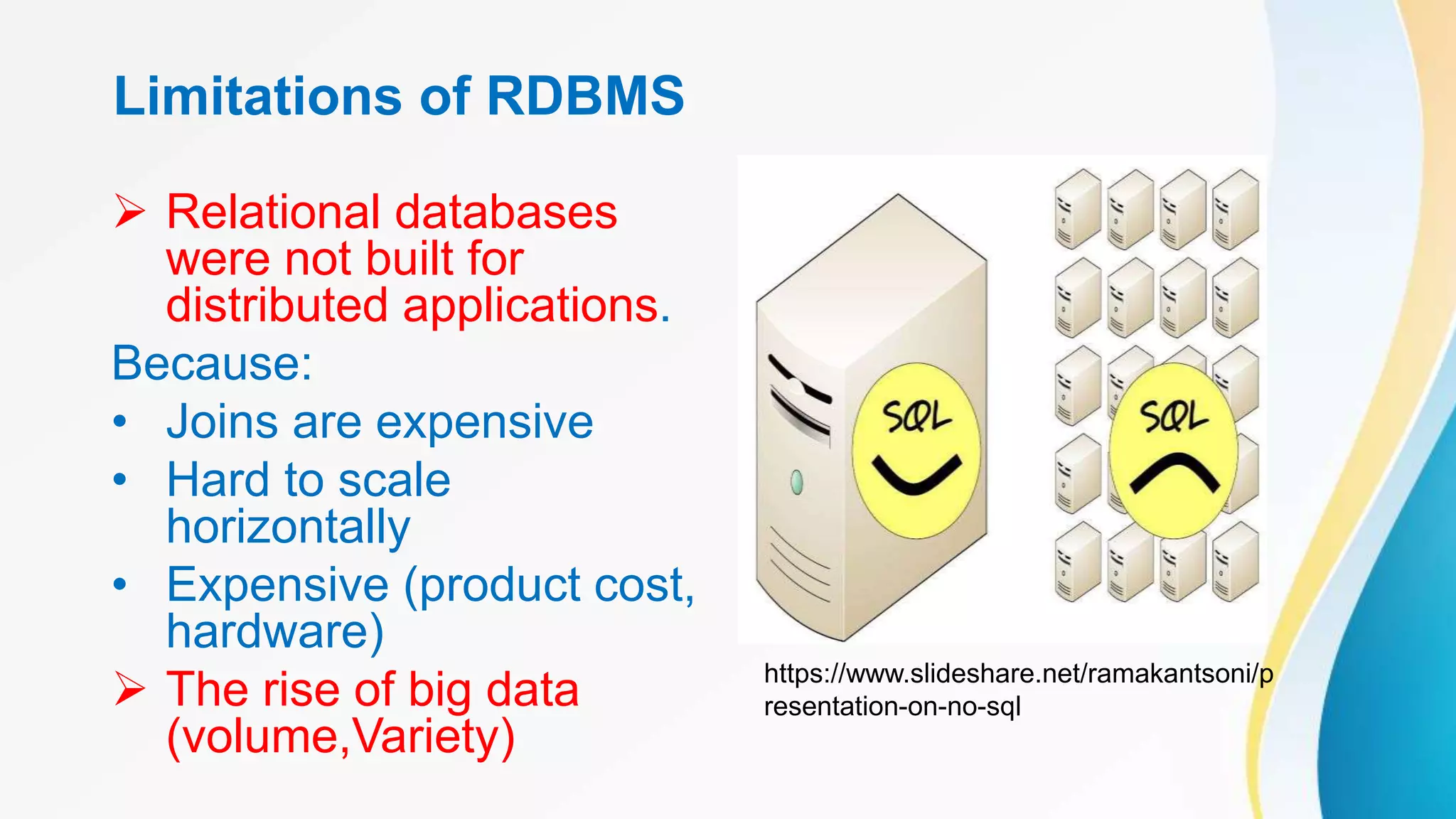
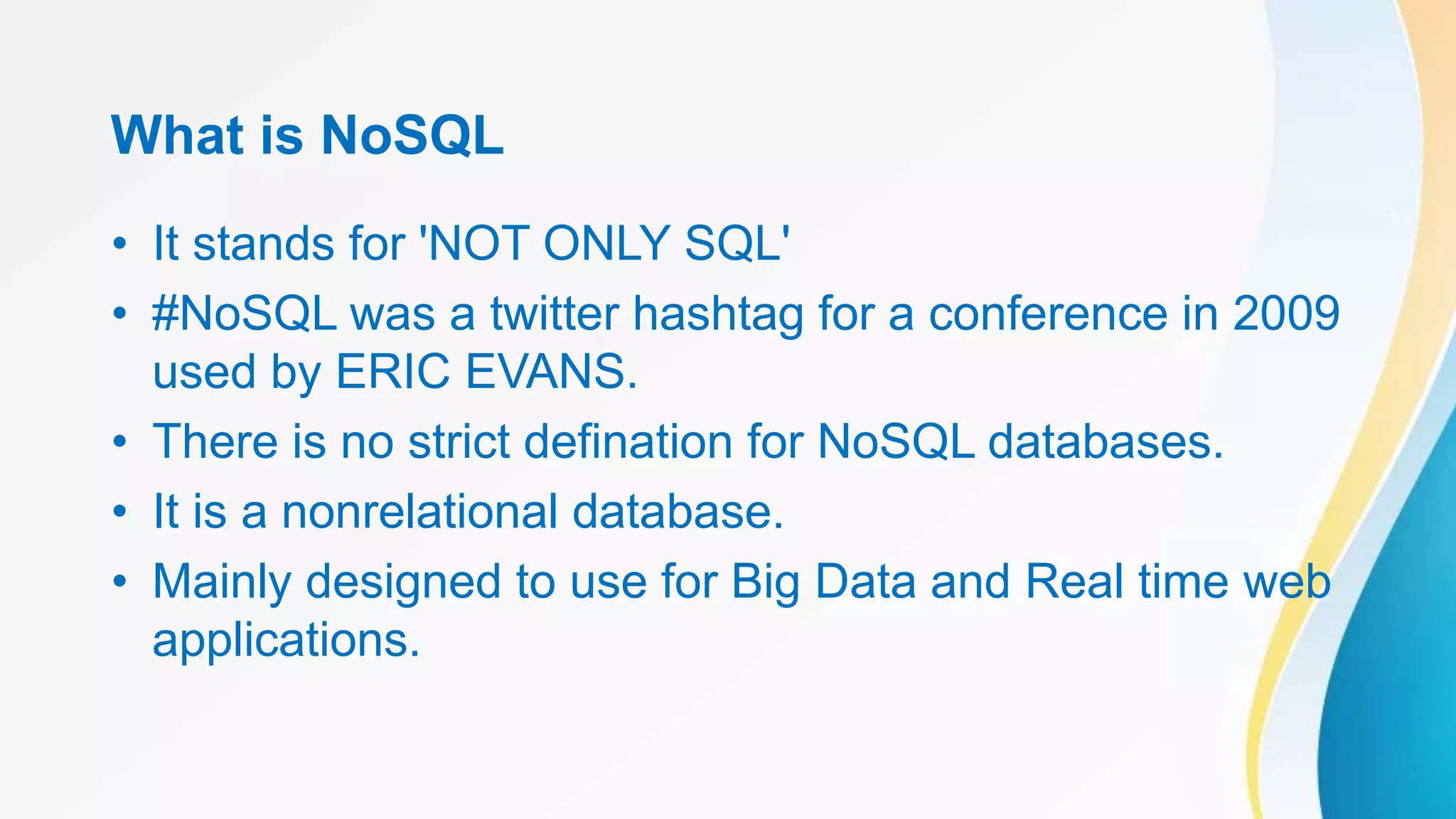

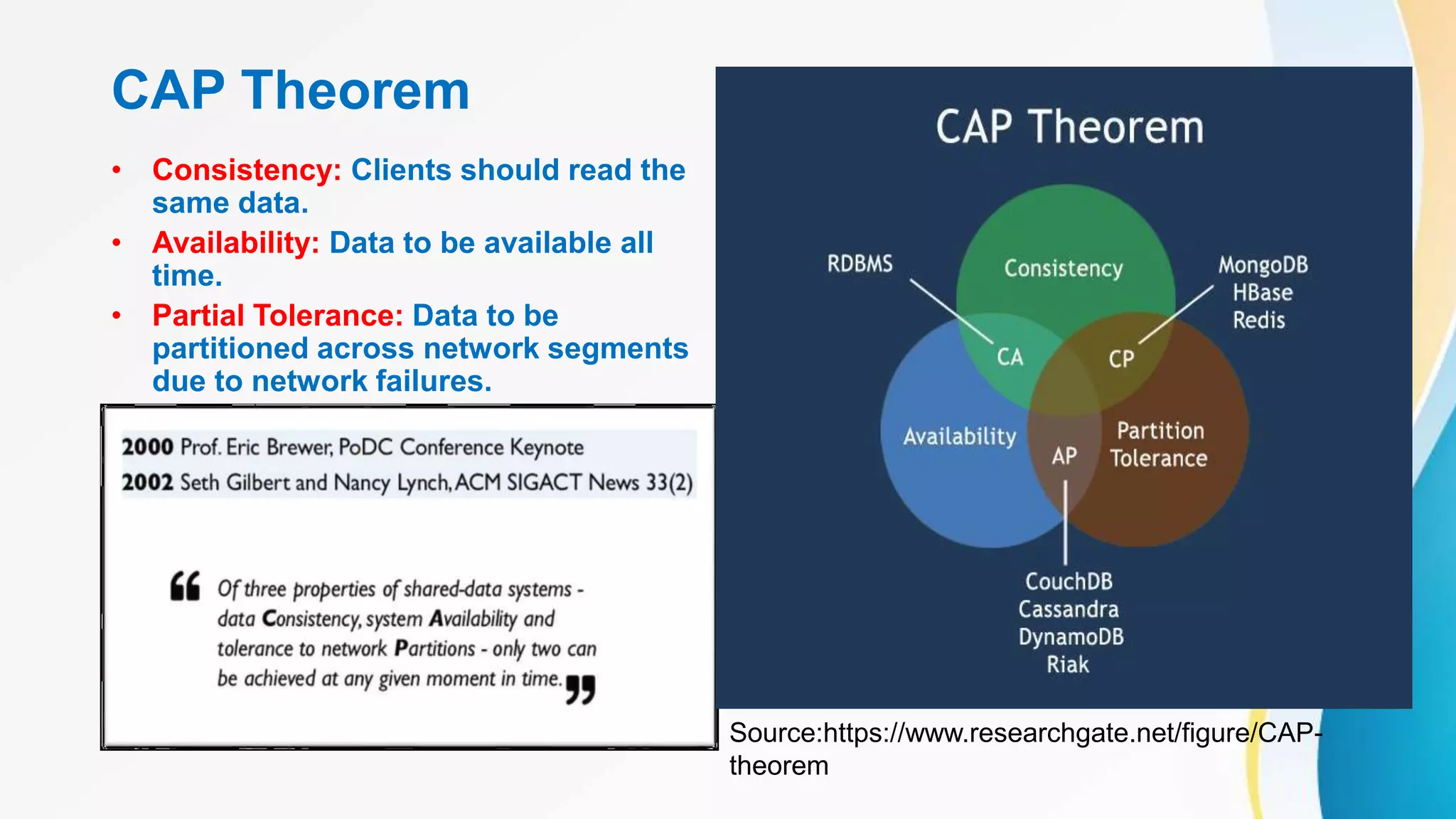
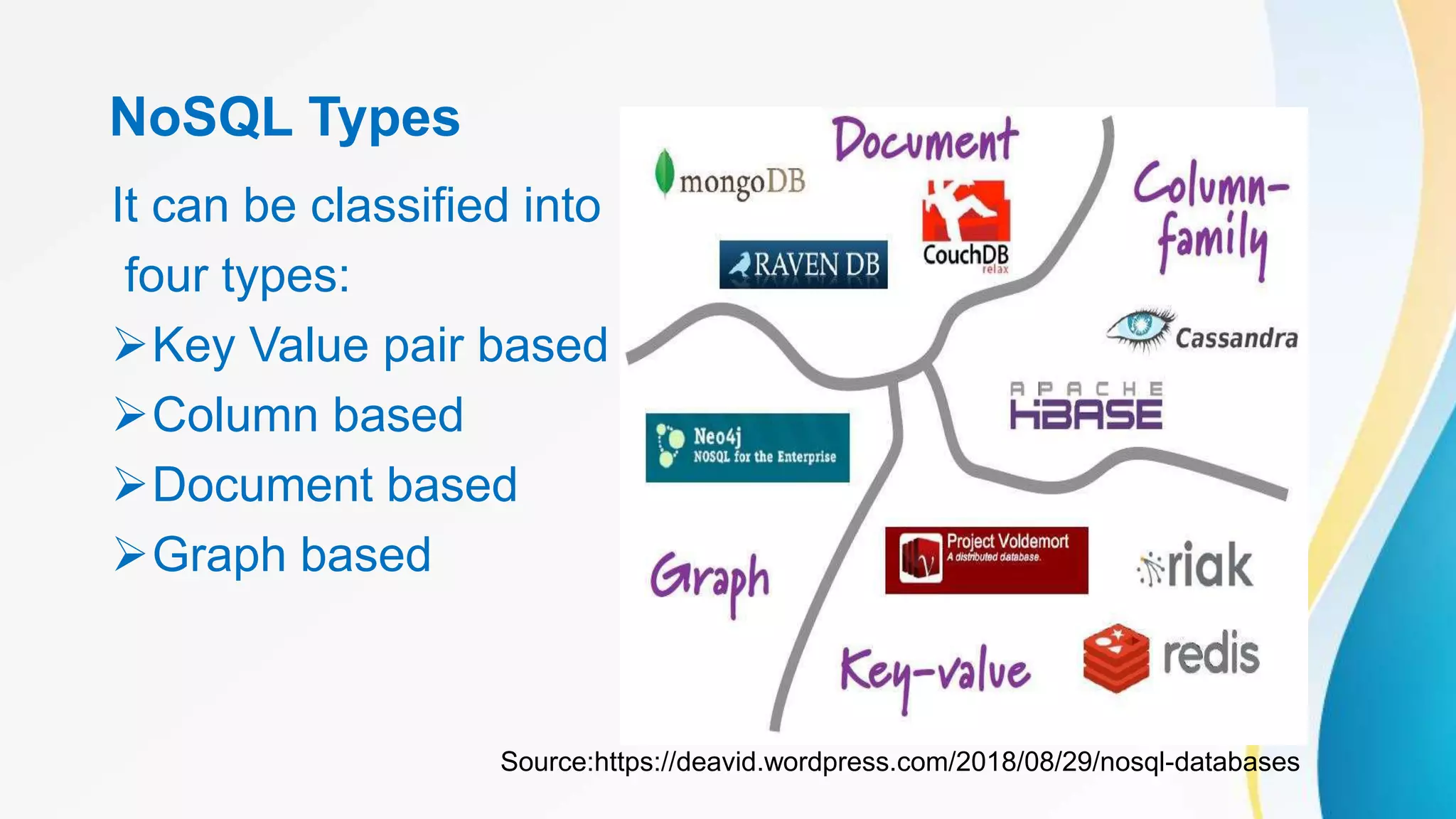
![Key Value Pair Based
• Data model: (key, value) pairs.
• Designed for processing dictionary.
• Dictionaries contain a collection of
records having fields containing data.
• Records are stored and retrieved
using a key that uniquely identifies
the record,and is used to quickly find
the data with in the database.
• Example: Oracle NoSQL Database,
Riak etc.
• We use it for: storing session
information, user profiles,
preferences , shopping cart data. Key Value Pair
Based[1].](https://image.slidesharecdn.com/presentation1-copy-190113091323/75/introduction-to-NOSQL-Database-12-2048.jpg)
![Column based
• It store data as Column families
containing rows that have many
columns associated with a row
key.Each row can have different
columns.
• Column families are groups of
related data that is accessed
together.
• Example:Cassandra, HBase,
Hypertable, and Amazon
DynamoDB.
• We use it for content
management systems ,blogging
platforms, log aggregation.
Column based [1]](https://image.slidesharecdn.com/presentation1-copy-190113091323/75/introduction-to-NOSQL-Database-13-2048.jpg)
![Document Based
• The database store send retrieves
documents. It stores documents in
the value part of the key-value
store.
• Self describing, hierarchical tree
data structures consisting of
maps, collections, and scalar
values.
• Example: Lotus Notes ,Mongo
DB, Couch DB, Orient DB, Raven
DB.
• We use it for content management
systems, blogging platforms,
webanalytics,real-timeanalytics e-
commerce applications.
Document Based [1]](https://image.slidesharecdn.com/presentation1-copy-190113091323/75/introduction-to-NOSQL-Database-14-2048.jpg)
![Graph Based
• Store entities and relationships
between these entities as nodes
and edges of a graph respectively.
Entities have properties.
• Traversing the relationships is
very fast as relationship between
nodes is not calculated at query
time but is actually persisted as a
relationship.
• Example: Neo4J, InfiniteGraph,
OrientDB, FlockDB.
• It is well suited for connected data
such as social networks ,spatial
data ,routing information for goods
and supply.
Graph Based[1]](https://image.slidesharecdn.com/presentation1-copy-190113091323/75/introduction-to-NOSQL-Database-15-2048.jpg)
